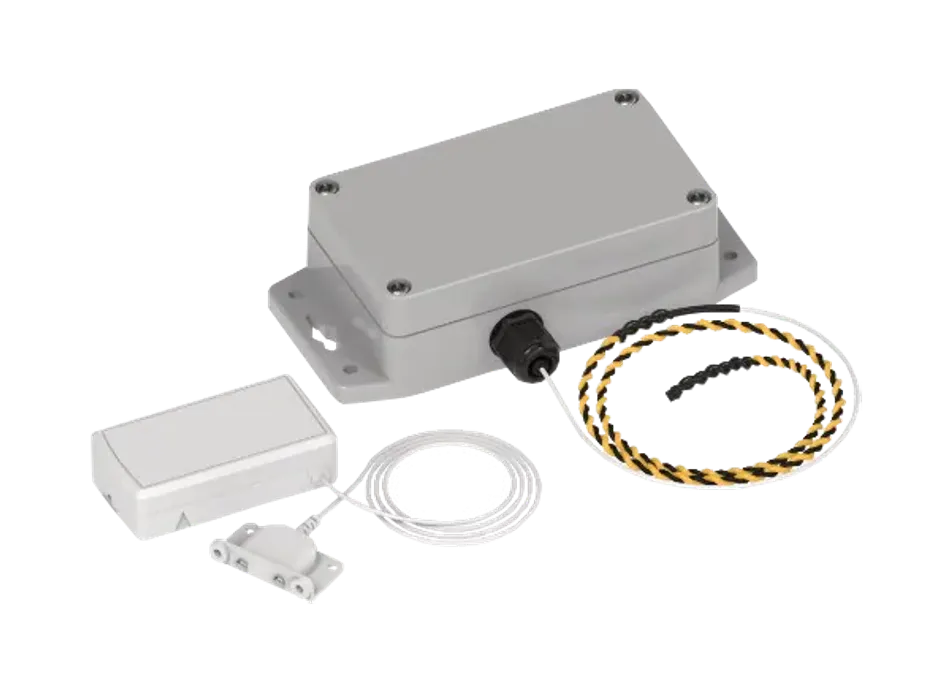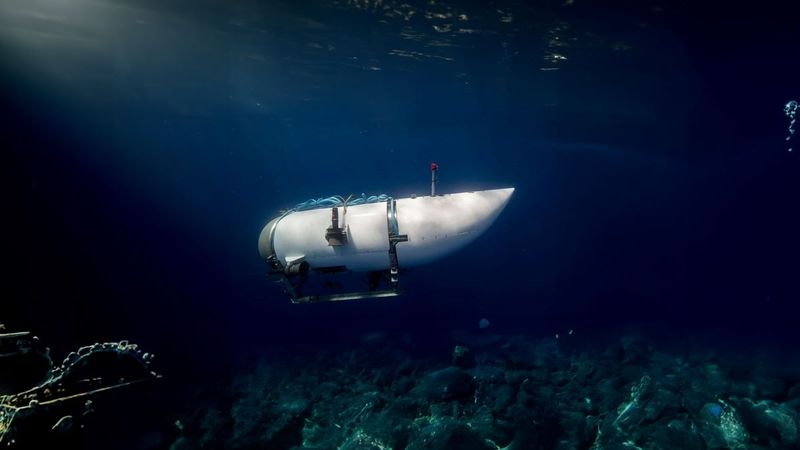Perils of the Deep: Mission Critical Sensing Technology Solutions
This article introduces two sensing products. One enables wireless monitoring of water leaks, while the other allows monitoring of humidity and temperature in critical electronics.
This article was first published on
resources.mouser.comThe ocean is a hostile environment for humans, so much so that some would consider it even more hostile than space. Like space, the deep ocean is extremely cold and completely dark; but unlike space's absence of pressure, the deep ocean has extreme pressure. Deep ocean explorers can only reach these depths using either a submarine or a submersible.
Submarines, like those from the US Navy, are ships that can navigate long distances underwater without having to surface. They can navigate the world’s oceans with precision and at speeds upwards of 25 knots (46km/h). Their highly engineered hulls are constructed of layers of steel, titanium, and other metal alloys, capable of withstanding the extreme pressure of the ocean’s depths. These submarines are also highly compartmentalized to help mitigate any potential hull breach.
Submarines are sleek, self-contained ships with mission-critical redundant safety systems, pinpoint accuracy navigation capabilities, and powerful propulsion systems capable of circumnavigating the globe without refueling. For the most part, a submarine’s crew can move about freely and carry on with normal life, close quarters notwithstanding.
A submersible’s mission typically revolves around exploration or excursions and, like submarines, they can descend into the ocean’s depths. But that is about where the similarities end. Compared to submarines, submersibles are almost the complete opposite. In general, submersibles tend to be small and clunky and lack sleekness. Submersibles are usually only capable of carrying a limited crew of 1–3 individuals who serve as operators and researchers. Also, their hulls are generally engineered as a unibody structure, not necessarily made of steel, and typically feature port holes or large plexiglass globes as windows for the crew—something submarines lack. Additionally, submersibles have limited propulsion systems powered by batteries that propel the vessel at low speeds.
Because of their size, submersibles lack water-tight compartmentalization, meaning a hull breach can have disastrous consequences. A submersible’s dive missions are typically short—in the order of hours— and typically rely on a surface mother ship for support, so many of their onboard safety, navigation, and life support systems do not typically employ redundancy.
Extreme Water Pressure
To get an idea of the immense pressure at the depth of the Titanic wreckage, let’s consider that the air pressure that surrounds us (referred to as one atmosphere) is 1013mbar or 14.7 pounds per square inch (PSI). We humans do not feel this pressure because the fluids in our bodies are pushing out, helping to equalize this pressure. But this all changes the deeper you go under the ocean; the pressure of the water pushing down on you increases approximately one atmosphere for every 10 meters of water depth. For example, at the depth where the Titanic wreckage lies, the pressure is approximately 385 atmospheres, or 385 times greater than the pressure at sea level. The fact that numerous sea-dwelling creatures face no difficulty coping with this high pressure, frigid 2.5°C water, and total darkness is simply nature at work.
Featured Products
This week's New Tech Tuesday introduces two sensing products. One enables wireless monitoring of water leaks, while the other allows monitoring of humidity and temperature in critical electronics. With precise measurements and ultra-low power consumption, these dependable products can help keep water and moisture under control in your future engineering projects.
The LoRaWAN® Wireless Leak Detection Sensors from MultiTech offer a highly effective solution to mitigate water damage in a range of environments. These sensors are available as 1-meter rope sensors for indoor, outdoor, or industrial use. In puck form, these sensors can promptly send alerts over a wireless network upon detection of water to prevent catastrophic damage. Leveraging LoRaWAN technology, these remote detectors can be strategically placed near water heaters, standing tanks, toilets, septic systems, floor drains, and other potential leakage points to preempt costly water damage.
The sensors are built for IoT applications, engineered for long-range transmission, and offer an extended battery life of 5–10 years at an affordable cost. They feature an open architecture design, allowing for flexible integration with other systems. A notable advantage is the optional web-based console for real-time provisioning, monitoring, and configuration of sensors in the field.
These sensors also have applications in monitoring plumbing and reservoir leaks, burst water pipe surveillance, data center leak, and water intrusion monitoring. These capabilities make them ideal for complex facilities, with custom designs available to meet specific needs.
Integrating these sensors on the same network allows monitoring from even the most remote locations. The sensors also feature long-range, excellent wireless penetration through structures, enclosure tamper detection, automatic error reporting, and over-the-air configuration. All these features and benefits reinforce the role of MultiTech's wireless leak detection sensors in effectively managing and reducing liquid leak-related risks.
The Sensirion 4th Generation SHT4x Digital Humidity and Temperature Sensors offer a range of benefits for climatic management of critical electronics. These sensors feature high accuracy and ultra-low power consumption, making them ideal for mobile and battery-driven applications. With their extended supply voltage range and improved accuracy specifications, they are well-suited for climate control, anti-fogging, and relative humidity/temperature (RH/T) condition monitoring. The sensors are compact and housed in a robust DFN package, allowing for easy integration into challenging designs while meeting the highest reliability standards. Additionally, the SENSEVAL-SHT4xV1 Evaluation Board simplifies sensor evaluation and prototyping, with compatibility for various STMicroelectronics boards. The I²C interface provides flexibility, and the internal heater enables sensor operation in demanding environments. These sensors are packaged in a surface mount technology (SMT) compatible format, making them suitable for high-volume applications. Sensirion's proven sensor solutions are widely used across different applications and markets.

Conclusion
The ocean’s immense water pressure at great depths poses a significant threat to humans and machines alike.
In the realm of technology, this week’s featured products offer innovative solutions for detecting water leaks and monitoring moisture and temperature. The potential damage caused by water leaks and moisture to electronics cannot be overlooked. The featured products from MultiTech and Sensirion play a crucial role in preventing such damage by providing early detection and monitoring capabilities. Implementing these innovative sensing technologies enables engineers to effectively mitigate the risks associated with water leakages or moisture buildup, ensuring the longevity and optimal performance of critical electronic systems.

